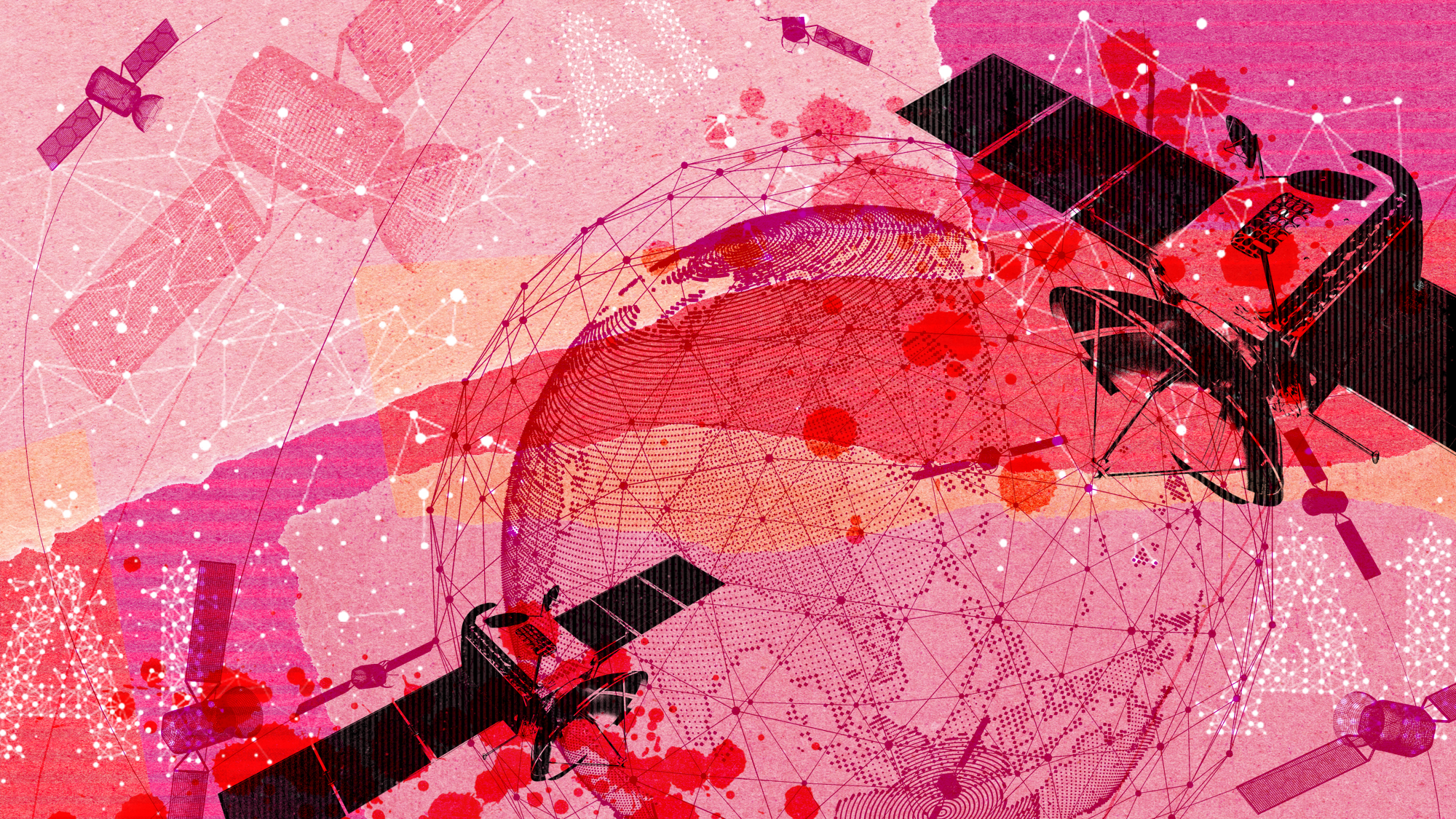North Korea’s cheerleaders: who are Kim Jong Un’s red coats?
There’s more than meets the eye to the Winter Olympic’s best-drilled cheerleaders

While North-South Korean diplomacy has at times stolen the spotlight from the athletes competing at the PyeongChang Winter Olympics, there has also been a lower-level furore over North Korea’s cheerleading squad.
The 230 all-female team, with their synchronised chanting, matching red coats and chaperones, has created a buzz in the Olympic village, not least because the squad outnumbers the country’s athletes by roughly 10 to one.
The Week looks at some of the more bizarre stories swirling around the cheerleaders:
The Week
Escape your echo chamber. Get the facts behind the news, plus analysis from multiple perspectives.

Sign up for The Week's Free Newsletters
From our morning news briefing to a weekly Good News Newsletter, get the best of The Week delivered directly to your inbox.
From our morning news briefing to a weekly Good News Newsletter, get the best of The Week delivered directly to your inbox.
They are not new to this
“The group has actually made a number of public appearances since 2002,” according to Vice. A squad of 288 cheerleaders attended the 2002 Asian Games in Busan, South Korea, and 303 cheerleaders accompanied athletes to the 2003 Summer Universiade in Daegu, South Korea. In fact, all the events the cheerleaders have attended outside their own country have been in South Korea.
They are subject to strict background checks
According to defectors, members are chosen after intense background checks. An Chan-Il, a defector who runs the World Institute for North Korea Studies, told the Herald Sun that the cheerleaders are “cherrypicked by the regime based on specific criteria” including their physical appearance.
A free daily email with the biggest news stories of the day – and the best features from TheWeek.com
“They must be over 1.63m tall,” he says. “Those who play an instrument are from a band and others are mostly students at the elite Kim Il-Sung University.”
They’re well-connected
Jenny Town, assistant director of the US-Korea Institute at Johns Hopkins’s School of Advanced International Studies, told The New York Times that the women came from “elite families in Pyongyang”, meaning they’re less likely to defect. “They will stick on message,” she said.
Han Seo-hee, 35, a North Korean defector to the South who was picked to be a cheerleader 16 years ago, told the newspaper that members were drawn from “those who are well assimilated to the North Korean regime, those who are exemplars of working collectively, those who are from the right families”.
21 of the former squad members were imprisoned in 2006
Twenty-one former squad members who attended the Asian Athletics Championships were reportedly sent to a prison camp on their return for talking about what they saw in the South.
An unnamed North Korean defector told South Korea’s Chosun Ilbo newspaper in 2006 that the squad pledges to treat South Korea as “enemy territory” and never speak about what they observed while there. Another defector told the paper that the women were held in the same camp where he had been a prisoner.
They are accompanied at all times
The New York Times reports that the cheerleaders are at all times accompanied by either police officers, male chaperones, or both.
When the squad is ferried to and from events – split into eight buses – they are accompanied by an escort of six police cars. On foot, they are split into groups of about 30, with each group guarded by two or more older male minders. They have to use the loo in groups, Business Insider writes.
Some have defected
Although The Guardian writes that the cheerleaders are “unlikely to defect”, at least one has done so. Han Seo-hee, a former cheerleader who defected during a 2006 trip has spoken about her country but never the circumstances of her defection.
They appear somewhat oblivious to their surroundings
“For all their raucous chanting at the hockey, where the unified Korean team lost to Switzerland, they were also described at times as seeming indifferent or oblivious to their surroundings,” Metro news writes. “At one point during the match, an American man proposed to his girlfriend on the arena’s video board to huge cheers and applause. The whole time, the cheerleaders remained staring straight ahead and continued to chant ‘we are one’.”
Kim Jong Un’s wife was once a cheerleader
Perhaps the most famous member of the group is Ri Sol-ju, who joined when she was 16 and eventually married North Korea leader Kim Jong Un.
Yahoo News reported in 2012 that she had visited South Korea in 2005 as a member of the cheerleading team for the Asian Athletics Championship held in Incheon. “Ri was one of the 90 cheerleaders back then who chanted ‘We are one!’” the site said.
They wear masks (possibly) of North Korea’s founder
Perhaps the most peculiar part of the North Korean cheerleaders’ highly-drilled repertoire of chants, dances and cheers is their inclusion of hundreds of masks of a young man. The BBC says conservative groups in South Korea are convinced that the masks are of the founder of North Korea, Kim Il Sung. South Korea’s Unification Ministry has sought to play down the incident, saying the photo was just a “good-looking” man, the BBC adds.
One of their songs hints at reunification
Among their most significant chants and songs is Arirang which, according to the South Korea Times, is a 600-year-old lyrical song that contains the “pathos and sorrow felt throughout history [that] has contributed to rallying unity among Koreans living both at home and abroad”.
The song’s significance is enormous on the Korean Peninsula, long predating the split in 1948. Both countries submitted it to be included on the UNESCO Intangible Cultural Heritage list. The South’s application was accepted in 2012 and the North’s in 2014.
-
 A peek inside Europe’s luxury new sleeper bus
A peek inside Europe’s luxury new sleeper busThe Week Recommends Overnight service with stops across Switzerland and the Netherlands promises a comfortable no-fly adventure
-
 Space data centers could be joining the orbit
Space data centers could be joining the orbitUnder the radar The AI revolution is going cosmic
-
 Codeword: December 23, 2025
Codeword: December 23, 2025The daily codeword puzzle from The Week
-
 How Bulgaria’s government fell amid mass protests
How Bulgaria’s government fell amid mass protestsThe Explainer The country’s prime minister resigned as part of the fallout
-
 Femicide: Italy’s newest crime
Femicide: Italy’s newest crimeThe Explainer Landmark law to criminalise murder of a woman as an ‘act of hatred’ or ‘subjugation’ but critics say Italy is still deeply patriarchal
-
 Brazil’s Bolsonaro behind bars after appeals run out
Brazil’s Bolsonaro behind bars after appeals run outSpeed Read He will serve 27 years in prison
-
 Americans traveling abroad face renewed criticism in the Trump era
Americans traveling abroad face renewed criticism in the Trump eraThe Explainer Some of Trump’s behavior has Americans being questioned
-
 Nigeria confused by Trump invasion threat
Nigeria confused by Trump invasion threatSpeed Read Trump has claimed the country is persecuting Christians
-
 Sanae Takaichi: Japan’s Iron Lady set to be the country’s first woman prime minister
Sanae Takaichi: Japan’s Iron Lady set to be the country’s first woman prime ministerIn the Spotlight Takaichi is a member of Japan’s conservative, nationalist Liberal Democratic Party
-
 Russia is ‘helping China’ prepare for an invasion of Taiwan
Russia is ‘helping China’ prepare for an invasion of TaiwanIn the Spotlight Russia is reportedly allowing China access to military training
-
 Interpol arrests hundreds in Africa-wide sextortion crackdown
Interpol arrests hundreds in Africa-wide sextortion crackdownIN THE SPOTLIGHT A series of stings disrupts major cybercrime operations as law enforcement estimates millions in losses from schemes designed to prey on lonely users